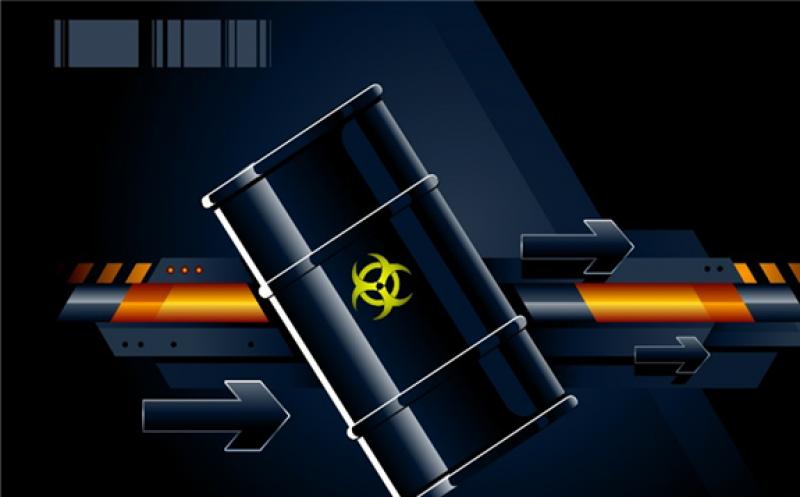Three independent UN human rights experts have expressed concern over Japan’s decision to discharge potentially radioactive water into the Pacific Ocean.

Even though the Japanese Government has suggested that the treated water stored in the tanks is not contaminated, the decision has been met with criticism from several countries, including China and South Korea.
On 13 April, Japan announced that 1.25 million tonnes of potentially contaminated wastewater from the decaying Fukushima nuclear power plant will be pumped into the ocean.
Japan’s Prime Minister, Yoshihide Suga, stated the water would only be dumped after being treated to remove radioactive isotopes. Suga said: “Releasing the treated water is an unavoidable task to decommission the Fukushima Daiichi Nuclear Power Plant and reconstruct the Fukushima area.”
However, in a joint statement, UN experts Marcos Orellana, Special Rapporteur on toxics and human rights, Michael Fakhri, Special Rapporteur on Right to Food, and David Boyd, Special Rapporteur on human rights and the environment stated: “The release of one million tonnes of contaminated water into the marine environment imposes considerable risks to the full enjoyment of human rights of concerned populations in and beyond the borders of Japan.”
The decontamination process removes most radioactive materials including strontium and cesium but leaves behind tritium, which poses little risk to human health in low concentration.
However, scientists warn that in the water, the isotope organically binds to other molecules, moving up the food chain affecting plants, fish and humans. Furthermore, concerns have been raised over the water containing quantities of radioactive carbon-14, which could be a threat to health.
According to the UN experts, the ALPS water processing technology (Advanced Liquid Processing System, a multi-nuclide removal system) had failed to completely remove radioactive concentrations in most of the contaminated water stored in tanks at the Fukushima Daiichi plant.
They stated: “A first application ALPS failed to clean the water below regulatory levels and there are no guarantees that a second treatment will succeed,” adding that tritium could pose risks to humans and the environment for over 100 years.
Response from IAEA
Despite the criticism from the UN, Director General Rafael Mariano Grossi welcomed Japan’s announcement concerning the disposal of treated water stored at the Fukushima Daiichi Nuclear Power Station and he said the International Atomic Energy Agency (IAEA) “stands ready to provide technical support in monitoring and reviewing the plan’s safe and transparent implementation”.
According to the IAEA, Japan’s chosen water disposal method is both technically feasible and in line with international practice. Controlled water discharges into the sea are routinely used by operating nuclear power plants in the world and in the region under specific regulatory authorisations based on safety and environmental impact assessments.
“Today’s decision by the Government of Japan is a milestone that will help pave the way for continued progress in the decommissioning of the Fukushima Daiichi nuclear power plant,” Mr Grossi said. “Tanks with the water occupy large areas of the site, and water management, including the disposal of the treated water in a safe and transparent manner involving all stakeholders, is of key importance for the sustainability of these decommissioning activities.”
“Nuclear safety is a national responsibility and it was for the Government of Japan to decide how to address the critical issue of water management. I’m confident that the Government will continue to interact with all parties in a transparent and open way as it works to implement today’s decision,” Director General Grossi said.
Japan has requested the IAEA’s cooperation in the disposal of the water by the IAEA dispatching international expert missions to review the country’s plans and safety standards.
“We will work closely with Japan before, during and after the discharge of the water,” said Mr Grossi, who visited the Fukushima nuclear power plant last year. “Our cooperation and our presence will help build confidence – in Japan and beyond – that the water disposal is carried out without an adverse impact on human health and the environment.”
The IAEA’s safety reviews, and other technical support are based on its safety standards, which constitute the worldwide reference for protecting the public and the environment from harmful effects of ionizing radiation.
An apology from TEPCO
The decision to dispose of the water comes after years of discussion with communities severely hit by the 2011 disaster – environmental NGOs, neighbouring countries and civil society. Despite the discussions, trust is at an all-time low and the Tokyo Electric Power Company (TEPCO) has issued a statement to apologize for the concern caused by the announcement for the people of Fukushima, and society as a whole.
“TEPCO shall continue to engage in self-directed measures to decommission the Fukushima Daiichi Nuclear Power Station and handle contaminated water and treated water while also striving to rebuild trust in our operations through the safe and stead completion of these tasks as we fulfill our responsibilities as the party responsible for the accident,” the statement concludes.
This could potentially be a public relations nightmare however, it all comes down to whether experts can successfully decontaminate the water before it meets the Pacific Ocean and is ingested by millions of fish destined for diners across the world.